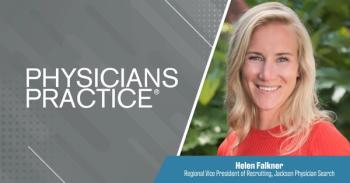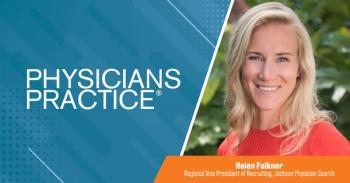
Nurse Practitioners Meet Growing Healthcare Demand
The challenge of meeting patient demand for primary-care services in the coming years is simple: nurse practitioners.
Among the many challenges facing America’s healthcare system is how our nation will overcome the growing shortage of primary-care physicians. All indications point to the current shortage being exacerbated even further in the coming years due to the confluence of four unavoidable truths:
• The full implementation of the Affordable Care Act will mean the addition of as many as 35 million more Americans with health insurance into the healthcare system. All of these people will need providers whom they can turn to and trust.
• America is aging. By 2030, one in every five Americans will be elderly with the number of people over the age of 65 reaching 72 million. Older adults have special needs and complicated challenges - both physically and emotionally - and are the highest utilizers of healthcare services.
• Increasingly, people are looking for alternative, more convenient locations (other than the physician’s office) to seek care - particularly for treatment for minor conditions. These could include retail sites in shopping malls (with weekend and evening hours), urgent care centers, or even workplace clinics. Who will staff these sites?
• Today there are approximately 778,000 practicing physicians in the United States with just under half of them in primary care. Even before health reform, the Association of American Medical Colleges estimated that an additional 45,000 primary care physicians would be needed by 2020 to keep up with demand. But where will those new primary-care physicians come from? Data shows that an increasing number of medical school students are opting for specialties instead of primary care, believing that choosing that path is likely to lead to more prestige, higher income and a less-demanding lifestyle.
Fortunately, this is one challenge for which there is a clear and sensible solution: nurse practitioners.
Nurse practitioners bring a wonderful balance of education and experience to the patient. Beyond the additional classroom training that they much take to achieve this designation, the average nurse practitioner has worked more than a decade as a registered nurse in a clinical setting. The core philosophy of the field is holistic, individualized care that focuses on patients' conditions as well as the effects of illness on the lives of the patients and their families. Nurse practitioners make prevention, wellness, and patient education priorities.
As such, primary-care physicians everywhere would be wise to look at nurse practitioners as a natural complement to their practice and a logical partner in caring for their patients. For by prudently partnering with nursing practitioners, physicians can focus on areas where their skills, education and experience can be best put to use.
Nurse practitioners already deliver healthcare including prescribing or renewing prescriptions for most drugs; ordering blood tests; performing routine physical examinations; monitoring chronic conditions; counseling patients about prevention; and treating colds, sore throats and the flu.
In recent years many states have expanded the scope of duties that nurse practitioners are allowed to perform. For example, Montana allows nurse practitioners to work without any physician supervision. By contrast, Texas requires a physician’s direct (on-site) supervision at least 20 percent of the time. Twenty-eight states are debating further loosening restrictions that prevent nurse practitioners from performing more tasks independently. And it’s time that they did, for studies have shown no difference in outcomes when patients are treated by a nurse practitioner or a physician.
Nurse practitioners are part of the largest segment of healthcare’s workforce. Presently, there are more than three million nursing professionals in the United States and as many as 19 million worldwide. These nurses are expanding their roles, redefining their profession and making contributions to the healthcare system in many critically important areas including research, quality of care, and patient rights. At the same time, they have maintained their all-important role as trusted advocate and calming voice for the patient.
It is time for primary-care physicians to take a fresh look at nurse practitioners as a sensible way to provide quality care and meet the enormous patient demands the current system is simply not prepared to handle. By physicians and nurses partnering together - and looking for new ways to leverage the best that each profession has to offer - we may find that the impending crisis facing our nation is in fact no crisis at all.
Courtney H. Lyder, ND, ScD (hon), FAAN is dean of the UCLA School of Nursing, a professor of nursing in the department of medicine and public health, as well as executive director of the UCLA Patient Safety Institute. He is an international expert in gerontology with the focus of his clinical work on chronic care issues affecting older adults. E-mail him
Newsletter
Optimize your practice with the Physicians Practice newsletter, offering management pearls, leadership tips, and business strategies tailored for practice administrators and physicians of any specialty.




